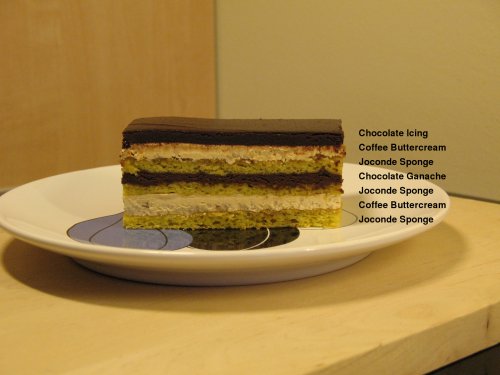Hi all,
It's been a while since I posted something here, so I thought I should put up some photos I've taken of stuff I've hauled from the oven over the last month or so. I've been occupied with the bread and pastry books by Friberg and Suas, so all of these recipes are taken from those sources.
Breads
I've baked most of the sourdough breads from ABAP, and I've found the sourdough rye and sourdough multigrain to be excellent breads. I've made a variation on the rye twice - first as a boule:
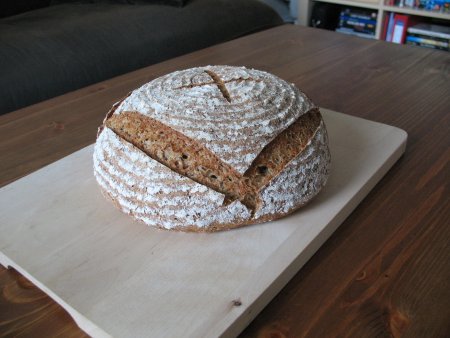
... then as a batard:
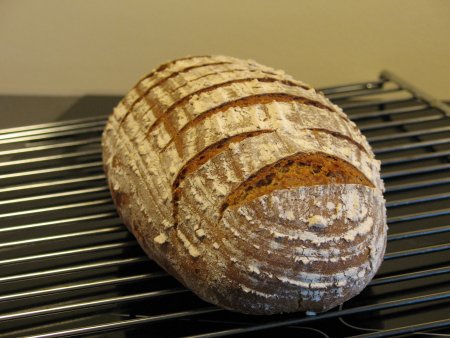
Here's the crumb of the batard version:
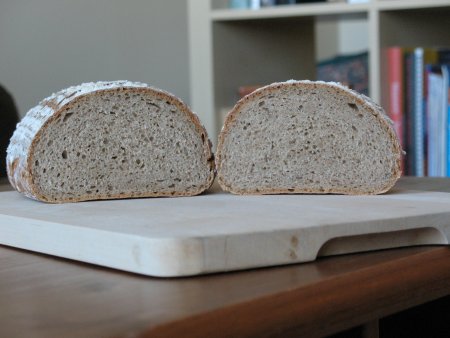
This is a very nice, well balanced base recipe for a filling everyday rye. The versions above are approx. 55% ryes, mostly whole rye. Curiously, this rye is made with a stiff white starter, so the flavour is very mildly sour. In the above loaves, there is about 0.3% fresh yeast, so the loaves are bulk fermented a good 2 hours, and given a final proof of just under 90 minutes. There is a delicious rye flavour to these loaves! As I said, I find the recipe to be a great "base" recipe for adding in other things as well - I added caraway and anise seeds to the batard above, and I'll be making this again with other seeds and some whole grain soakers in the future.
Below is a photo of the sourdough multigrain from ABAP - also a terrific formula. Here enjoyed with herring, a fresh salad and sour cream.
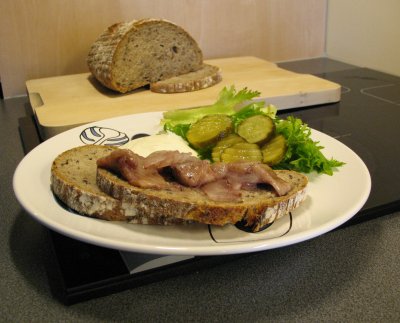
Croissants
My freezer's been out of croissants for months on end, so a couple of weeks ago I decided to get my act together and haul out that butter block from the fridge! I used the simplest croissant recipe from ABAP (i.e. no preferments or sourdough), but gave the dough an overnight retardation in the fridge during bulk fermentation. The dough came out relaxed and easy to work with.
I'm using three single turns during lamination of croissant doughs, and this time I formed ordinary croissants (since I'm making these so rarely, I wanted to practice shaping a bit). After a few minutes in the oven, and the melted butter scent is filling the apartment, it's time to crank out that victory beer I've been saving:
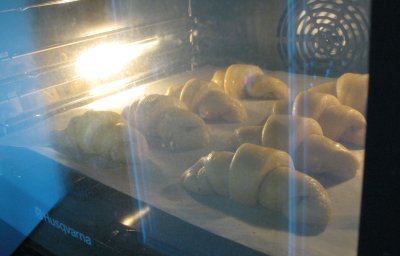
I was very happy with how these turned out - as full and rich in taste as any croissants I've made before with a preferment in the dough, but this time with a much lighter interior. I couldn't get a decent photo of the interior cross section, but it was incredibly light and fragile, almost like a spiderweb by the look of it!
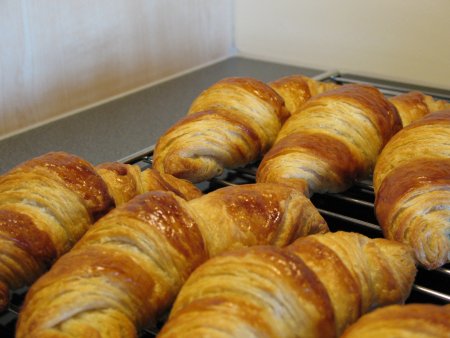
Layer upon layer upon layer upon... yum...
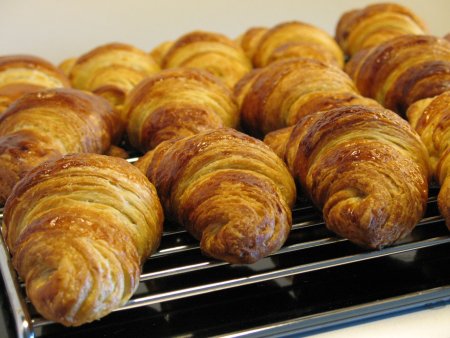
Pastry
Easter time is the season for oranges where I come from, so I candied some peel from oranges I had and put them in cream scones together with dark raisins. A real treat!
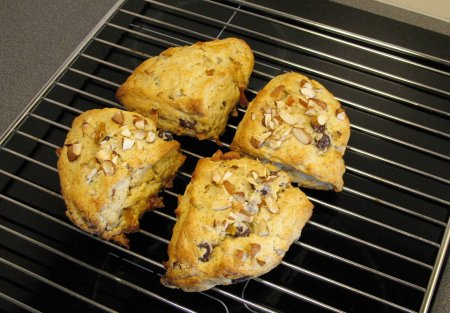
I like my scones very cake-like (I hate those hard, chewy bricks I sometime get at the store... never again!), so I just blend everything together in a bowl (by hand or using a rubber spatula), before gently pressing the sticky mess into a springform. Slice, wash and bake! I cream washed these before putting them into the oven, so they came out a bit paler than cream scones with a proper egg wash.
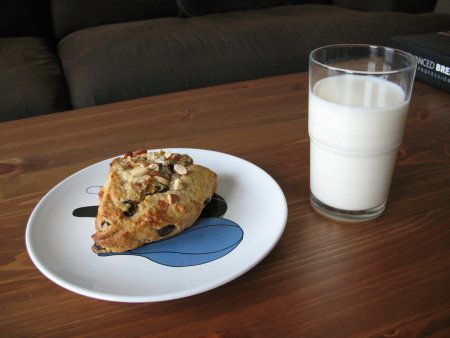
Still good for breakfast, though.
After pulling those croissants off, I wanted to take things two turns further, and opted for a go at the puff pastry dough from Friberg's book. I've only done croissants three times before and never any puff, so this was definitely an eye opening experience. A massive chunk of butter where gently incorporated into a shaggy dough, and given five single turns. After the final turn, I rolled the dough gently into a rectangle 2-3 cm thick. In the photo underneath is about 2/3 of the dough (the other third was in the prepping stages of some puff pastry diamonds - more on those below) wrapped in cling film. (By the way, if anyone has made the puff dough from Friberg's book, and you don't mind, would you send me a message? There are some things in preparing the butterblock that I'd like to clear up!)
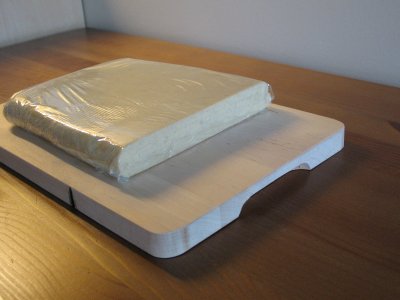
As I said, this was my first experiment with puff dough, so I had no idea about the powerful punch this stuff packs when it gets into a steaming hot oven. Check out the oven spring:
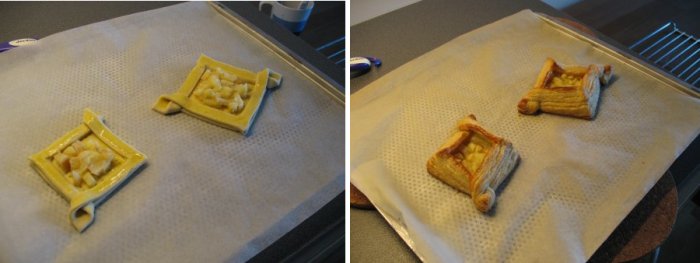
If there only could be a way to put 243 layers of butter into that rye dough... I used 1/3 of the puff dough to make some puff pastry diamonds with chunky apple filling and some with pastry cream (not shown here).
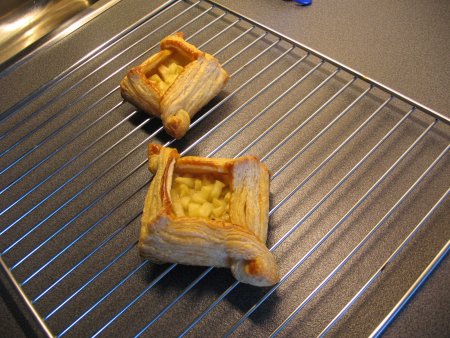
Finally, for something a bit different - I'm not much of a cake baker, but I'd really love to learn how to do it properly. I've only made one layered cake before (a simple lemon curd cake), so I picked one of the simplest layered cakes in ABAP, an Opera cake. The Opera is typically made from a biscuit viennoise or a joconde sponge base, which is cut and stacked alternately with coffee buttercream and a chocolate ganache. A strong coffee soaker adds to the caffeine rush of this cake. Do not eat it on empty stomach. Or if you are pregnant. Or if you have a heart condition.
I used the recipe for the joconde sponge from Friberg's book (finished sponge, messy bowls and working notes below), and took the rest from ABAP.
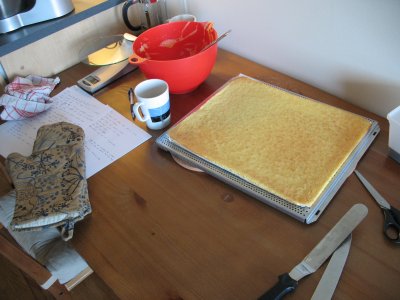
I can mix a decent buttercream and form an edible chocolate ganache, but for me, the challenge is always in putting the many components together in something that you'd like to serve other people...!
Although my cake is a far cry from this sexy slab of Opera, I was still quite happy with how it turned out:
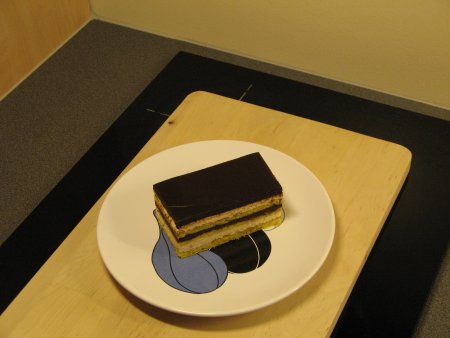
The layer breakdown:
